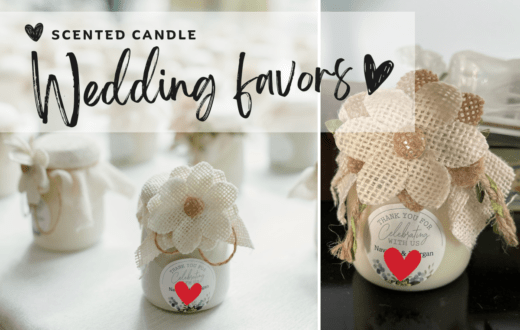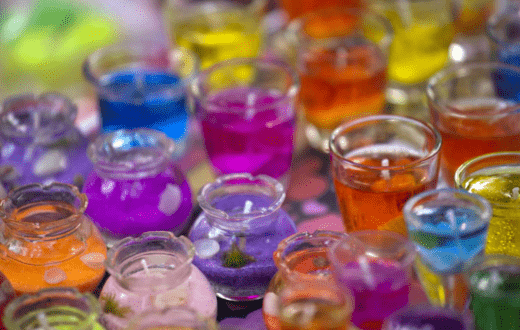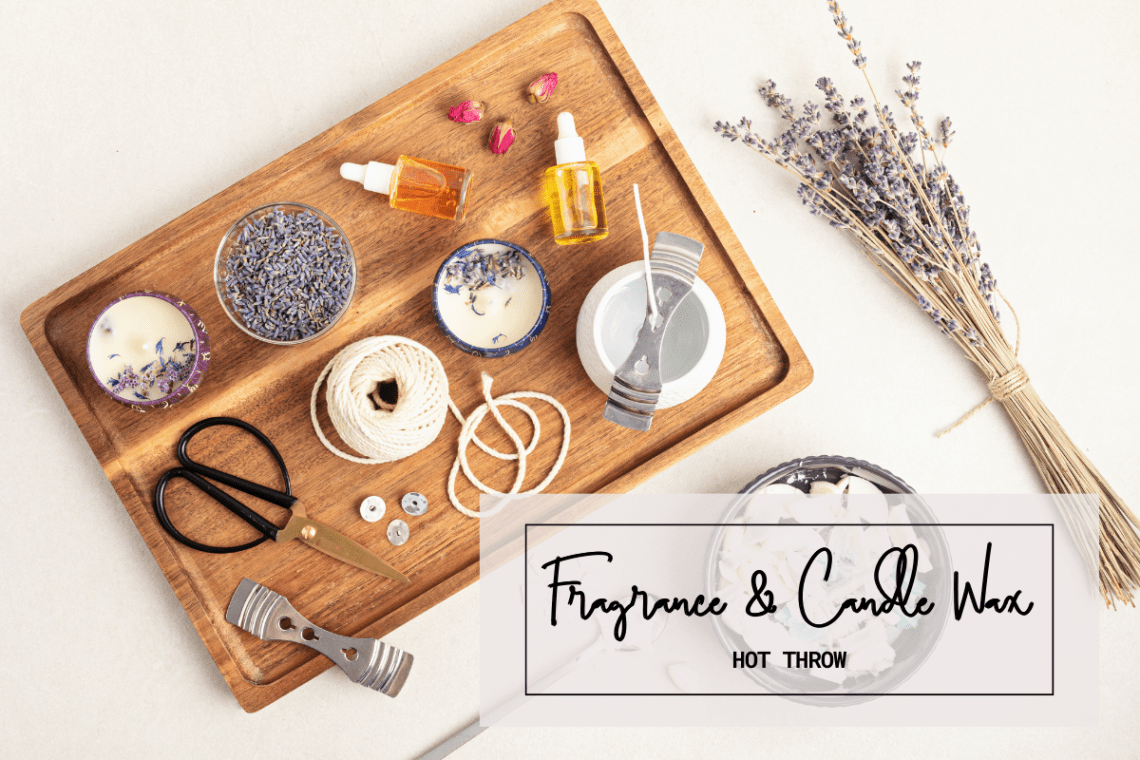
How to Determine a Fragrance and Candle Wax’s Hot Throw
You’ll often hear people say that candle making is a science. Each wax type and fragrance comes with their own flash points, melting points and compatibility with one another. Most people though, will not follow the instructions to the T. And sometimes fragrances come with no instructions, so how does one know if a fragrance paired up with a wax of their choice will have a good hot throw?
The hot throw, or the scent intensity when the candle is burning, is a crucial factor that determines the overall aromatic experience. In this blog post, I’ll go over the key elements that contribute to a good hot throw and guide you on how to choose the right fragrance and candle wax for an aromatic haven.

Understanding Hot Throw
The hot throw is the fragrance intensity released when the candle is burning. A strong hot throw ensures that the scent permeates the surrounding space, creating a delightful and immersive experience. Several factors contribute to a good hot throw, including the quality of the fragrance oil and the characteristics of the candle wax.

Choose High-Quality Fragrance Oils
The foundation of a great hot throw lies in the quality of the fragrance oil. Opt for fragrance oils specifically formulated for candle making, as they are designed to withstand the heat and combustion process. Consider oils with a higher concentration of essential oils, as they tend to produce a more robust scent.
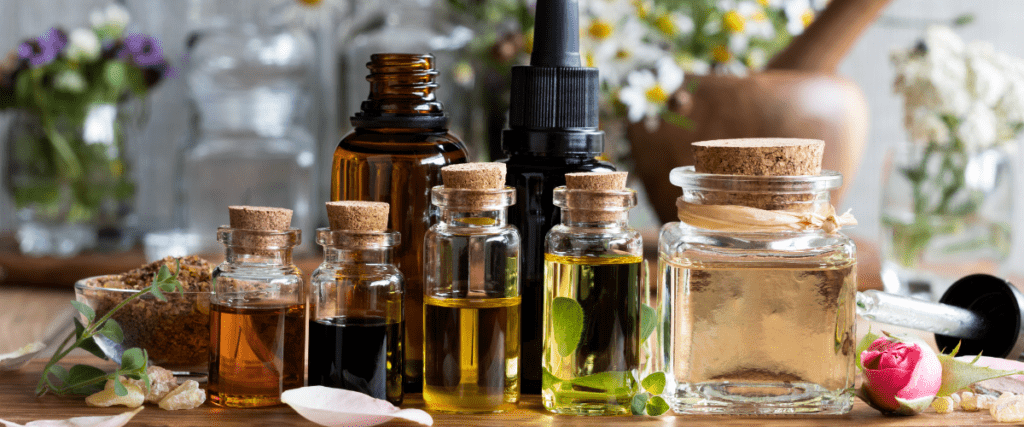
While essential oils are derived from natural sources and can offer a range of therapeutic benefits, not all essential oils perform equally well in candle-making. Here’s how you can assess whether an essential oil will have a strong hot throw in a candle:
Oil Quality
Choose high-quality essential oils. Look for oils that are pure, free from additives, and sourced from reputable suppliers. Lower quality oils or those with impurities may not hold up well during the candle-making process and could result in a weaker hot throw.
Flash Point
The flash point of an essential oil is the temperature at which it evaporates and can ignite. While this is more relevant for safety concerns, oils with higher flash points may better withstand the heat of the candle flame, contributing to a more robust hot throw.
Viscosity
Essential oils vary in viscosity, which can affect their ability to disperse and mix with the candle wax. Oils that are too thick or too thin may not distribute evenly, impacting the fragrance release. Experiment with different viscosities to find the right balance for your candle-making process.
Volatility
Some essential oils are more volatile than others, meaning they evaporate quickly. While volatility is essential for fragrance release, extremely volatile oils may dissipate too rapidly, resulting in a shorter-lived hot throw. Strike a balance between volatility and stability to maximize the longevity of the scent.
Compatibility with Candle Wax
Not all essential oils mix well with various types of candle wax. Some oils may not bond effectively with the wax, leading to separation or uneven distribution of fragrance. It’s advisable to conduct small-scale tests with different waxes to determine compatibility and performance.
Concentration
The concentration of essential oil in your candle formulation also plays a crucial role. While it might be tempting to add more oil for a stronger scent, excessive amounts can lead to issues such as poor burn quality, smoking, or even safety hazards. Follow recommended guidelines for fragrance concentration provided by the essential oil supplier or candle-making resources.
If you’re looking for a reputable company to buy quality candle wax, check out Nature’s Garden Candle Co.

Select the Right Candle Wax
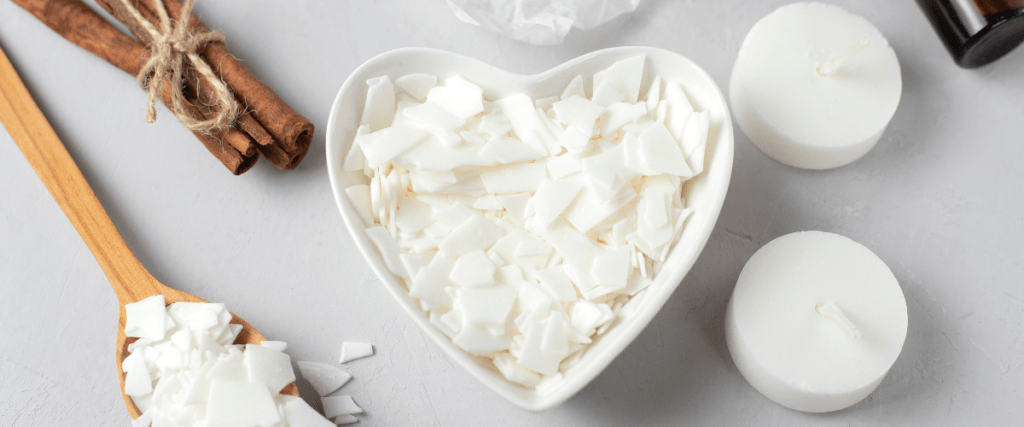
If you don’t know much about the fragrance you want to use to make candles with, it’s best to pick a wax that is suitable for most fragrances that will create the best hot throw. Different types of candle wax have distinct characteristics that can affect the hot throw. Here are some popular choices:
Soy Wax: Known for its clean burn and excellent fragrance retention, soy wax often provides a strong hot throw. Look for soy wax labeled as “container blend” for optimal performance in candles.
Paraffin Wax: This traditional wax is widely used in candle making due to its ability to hold and disperse fragrance effectively. It provides a strong hot throw and is often less expensive than other types of wax.
Coconut Wax: Coconut wax is known for its slow and clean burn. It has a great scent throw and works well with a variety of fragrance oils.
Beeswax: While beeswax has a natural honey scent, it may not hold additional fragrances as well as other waxes. Blending it with other waxes can enhance its performance.
Can’t decide which Wax type will work for your project? Check out my comprehensive guide (laid out in an easy-to-understand chart format).

Proper Wick Selection
Believe it of not, even the wick you choose can make a difference in the scent throw. The size and type of the wick influence the hot throw. A wick that is too small may not create enough heat to disperse the fragrance, while a wick that is too large can lead to soot and an overpowering scent. Follow the wick size recommendations provided by the wax suppliers or conduct small test burns to determine the optimal wick size for your specific combination.
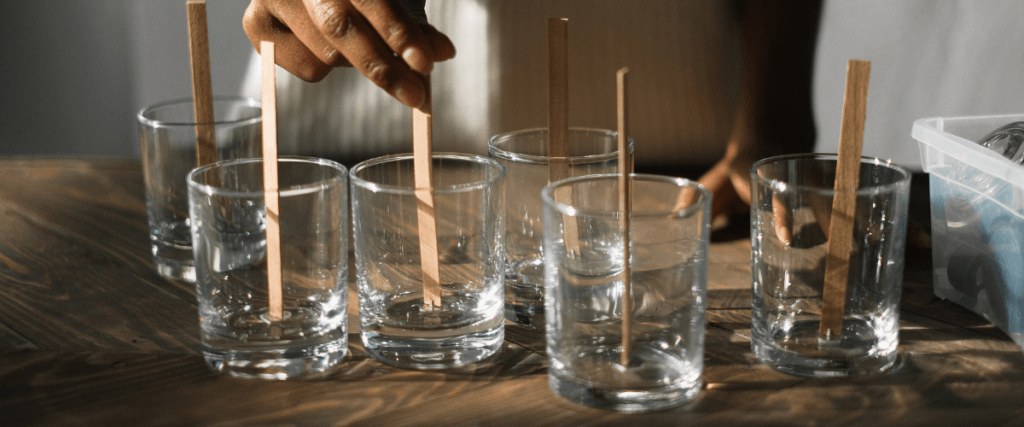
Many candle-making suppliers offer wick size guides or charts that match different wick sizes with specific jar sizes and types of wax. While these charts are not fragrance-specific, they can serve as a starting point for your experiments.
Different wick materials, such as cotton, wood, or hemp, can impact the burn characteristics and hot throw. Experimenting with various wick types alongside different sizes can provide additional insights into achieving the desired fragrance intensity.

Curing Time

Allowing your candles to cure, or rest, after pouring is essential for maximizing the hot throw. While it can be tempting to light a new candle immediately, giving it a few days or even weeks allows the fragrance to fully integrate with the wax, resulting in a more potent hot throw.
Curing time also helps mitigate potential interference between the fragrance and the wax. Some fragrances may interact with the wax composition, affecting their ability to release their full scent when burned. Allowing the candle to cure minimizes these interactions, promoting a more effective hot throw.

All in all, if you don’t know the quality of specifics of your fragrance and whether it’ll give off a good hot throw in your scented candle, you can still achieve a good hot throw by involving a combination of the right candle wax, proper wick selection, and patience during the curing process. By understanding these key elements and experimenting with various combinations, you can create candles that not only look beautiful but also fill your space with enchanting and lasting fragrances. Embrace the art of candle making, and let the allure of a well-crafted hot throw transform your living spaces into aromatic retreats.

